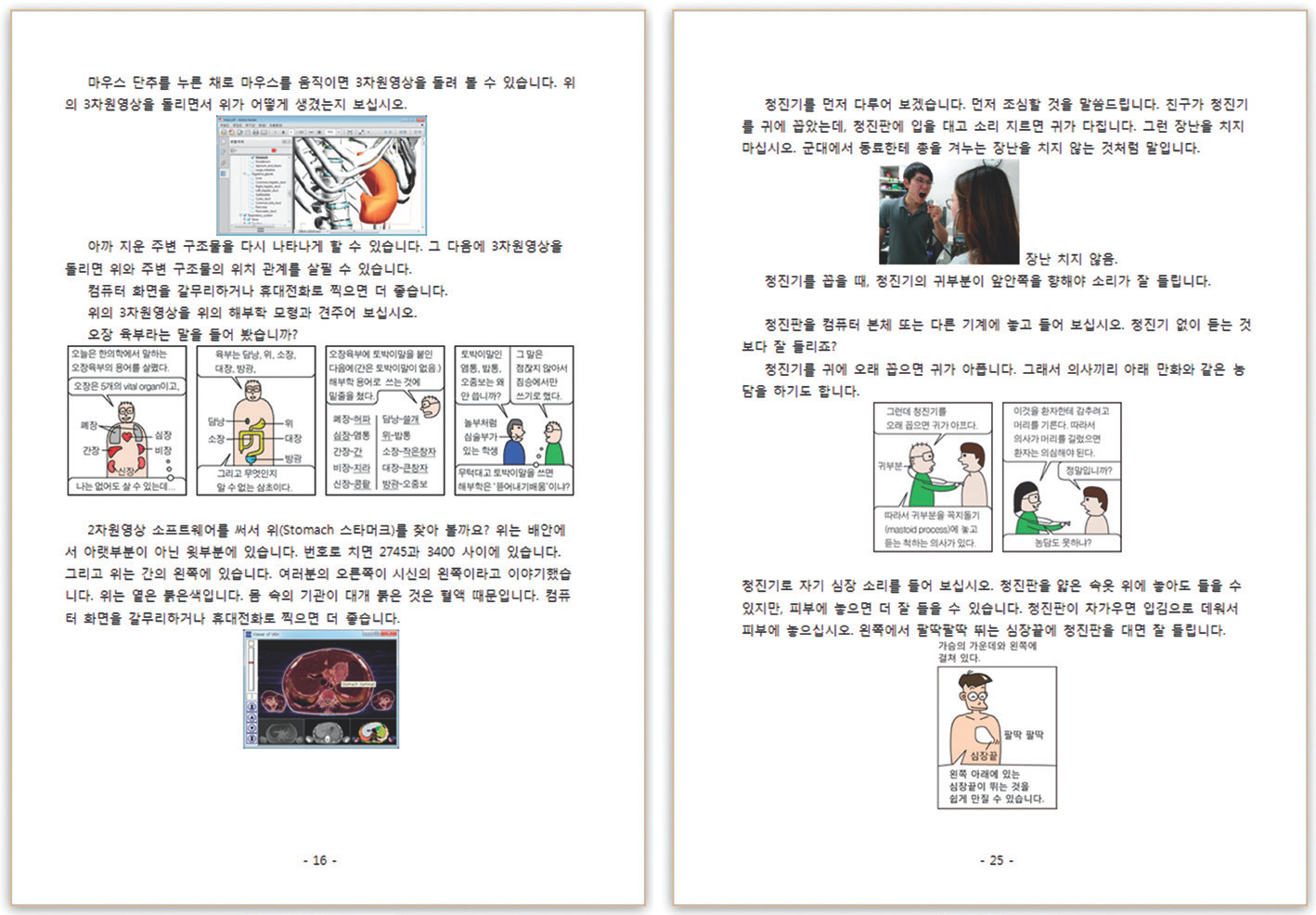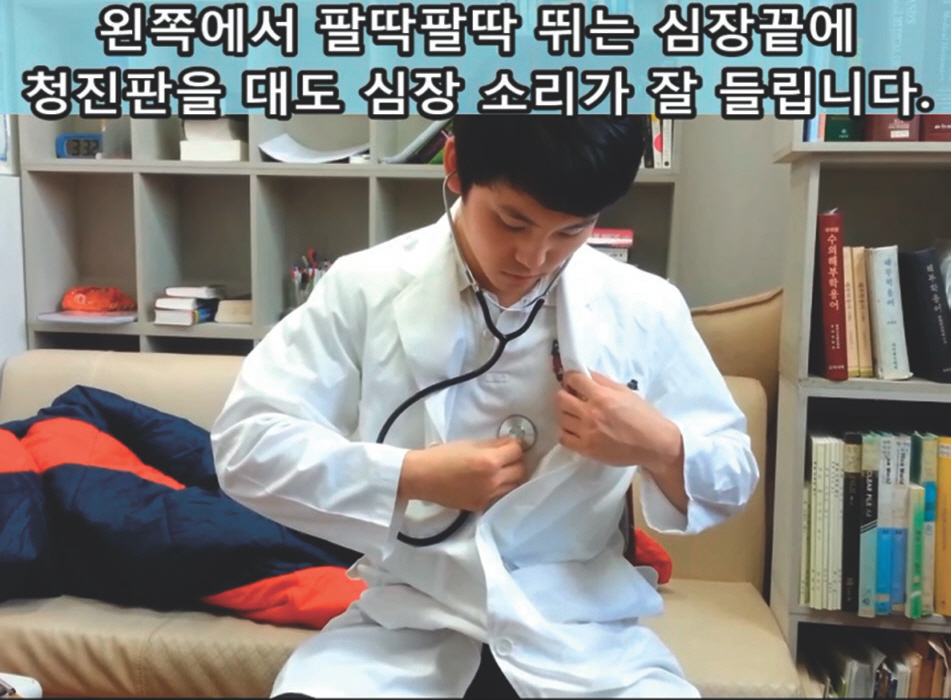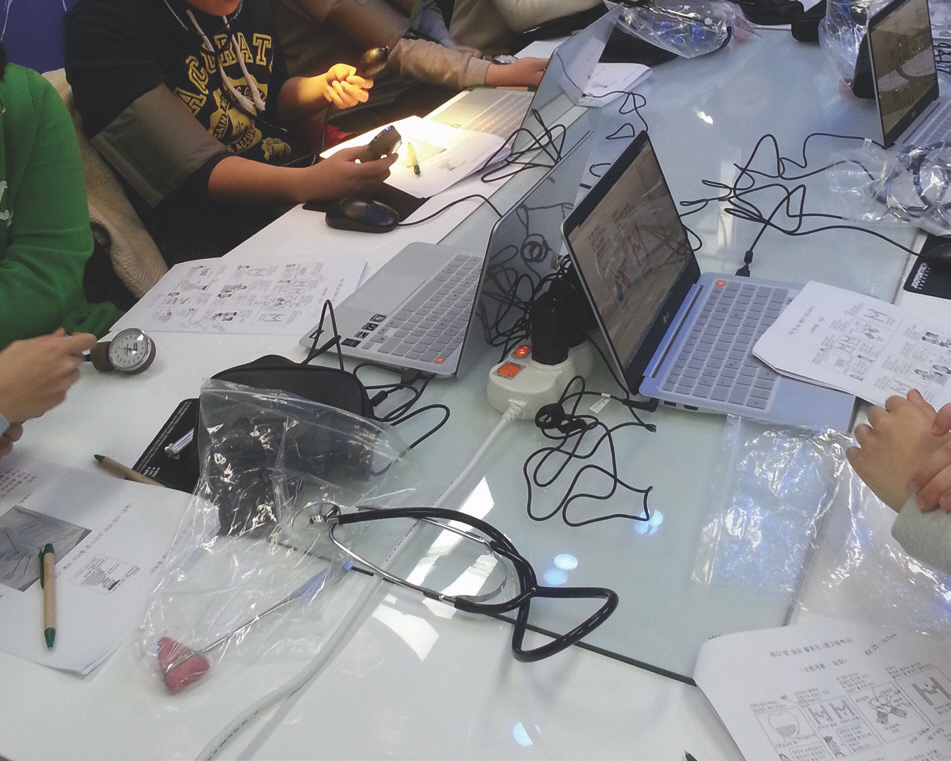Korean J Phys Anthropol.
2015 Jun;28(2):79-85. 10.11637/kjpa.2015.28.2.79.
A Guide Book for Children and Adolescents to Experience Anatomy and Clinics
- Affiliations
-
- 1Department of Anatomy, Ajou University School of Medicine, Korea. dissect@ajou.ac.kr
- 2Gwangju National Science Museum, Korea.
- KMID: 2283756
- DOI: http://doi.org/10.11637/kjpa.2015.28.2.79
Abstract
- The purpose of this study is to enable children and adolescents to experience anatomy and clinics. For the purpose, the ways to use the anatomy educational resources (comics, 3-dimensional images, and 2-dimensional images) and diagnostic tools (stethoscope, sphygmomanometer, pen light, and reflex hammer) were described in a guide book. Following the guide book, students experienced anatomy and clinics in a course of the science museum. They learned anatomy with the comics, then did virtual dissection with the 3-dimensional and 2-dimensional images. Sequentially, with the diagnostic tools, they listened to heart sound, measured blood pressure, and performed light reflex and knee jerk. Through this study, we have found that anatomy and clinics should be experienced pleasantly. The complimentary guide book is expected to be further improved in future, so as to achieve better experience at home, science museum, and school.
Keyword
Figure
Reference
-
References
1. Hwang SB, Chung MS, Park JS. Anatomy cartoon for common people. Korean J Anat. 2005; 38:433–41.2. Jang HG, Chung MS, Chae KS, Lee ST, Park HS, Lee SH, et al. Multimedia data for common people to learn anatomy easily. J Lifestyle Med. 2012; 2:47–55.3. Shin DS, Chung MS, Park JS, Park HS, Lee S, Moon YL, et al. Portable document format file showing the surface models of cadaver whole body. J Korean Med Sci. 2012; 27:849–56.
Article4. Shin DS, Chung MS, Park HS, Park JS, Hwang SB. Browsing software of the Visible Korean data used for teaching sectional anatomy. Anat Sci Educ. 2011; 4:327–32.
Article5. Korean Association of Anatomists. Anatomical terminology. 6th ed.Anyang: Academya;2014.6. Song JJ, Lee HC, Yoo PK. The effect of science cartoon reading on the levels of interest in science, the academic achievements and the scientific attitudes of elementary students. Elem Sci Educ. 2013; 32:581–92.7. Salend SJ. Creating inclusive classrooms: effective and re-flective practices. 7th ed.New York City: Pearson;2011.8. Han MJ, Yang CH, Noh TH. An analysis of teaching strategies of science teacher's teaching in science museum. J Korean Assoc Sci Educ. 2014; 34:559–69.
Article9. Oh CS, Kim KJ, Chung E, Choi HJ. Digital report in an anatomy laboratory: a new method for team-based dissection, reporting, and evaluation. Surg Radiol Anat. 2015; 37:293–8.
Article10. Chung BS, Chung MS. Free manual of the cadaver dissection modifiable by other anatomists. Anat Sci Int. 2015; 90:201–2.
- Full Text Links
- Actions
-
Cited
- CITED
-
- Close
- Share
- Similar articles
-
- About the new edition of child and adolescent health record book
- Truly practical, a book review for Teaching Anatomy: A Practical Guide
- Effects of Reading a Free Electronic Book on Regional Anatomy with Schematics and Mnemonics on Student Learning
- Panic Disorder in Children and Adolescents
- Dizziness in children and adolescents





